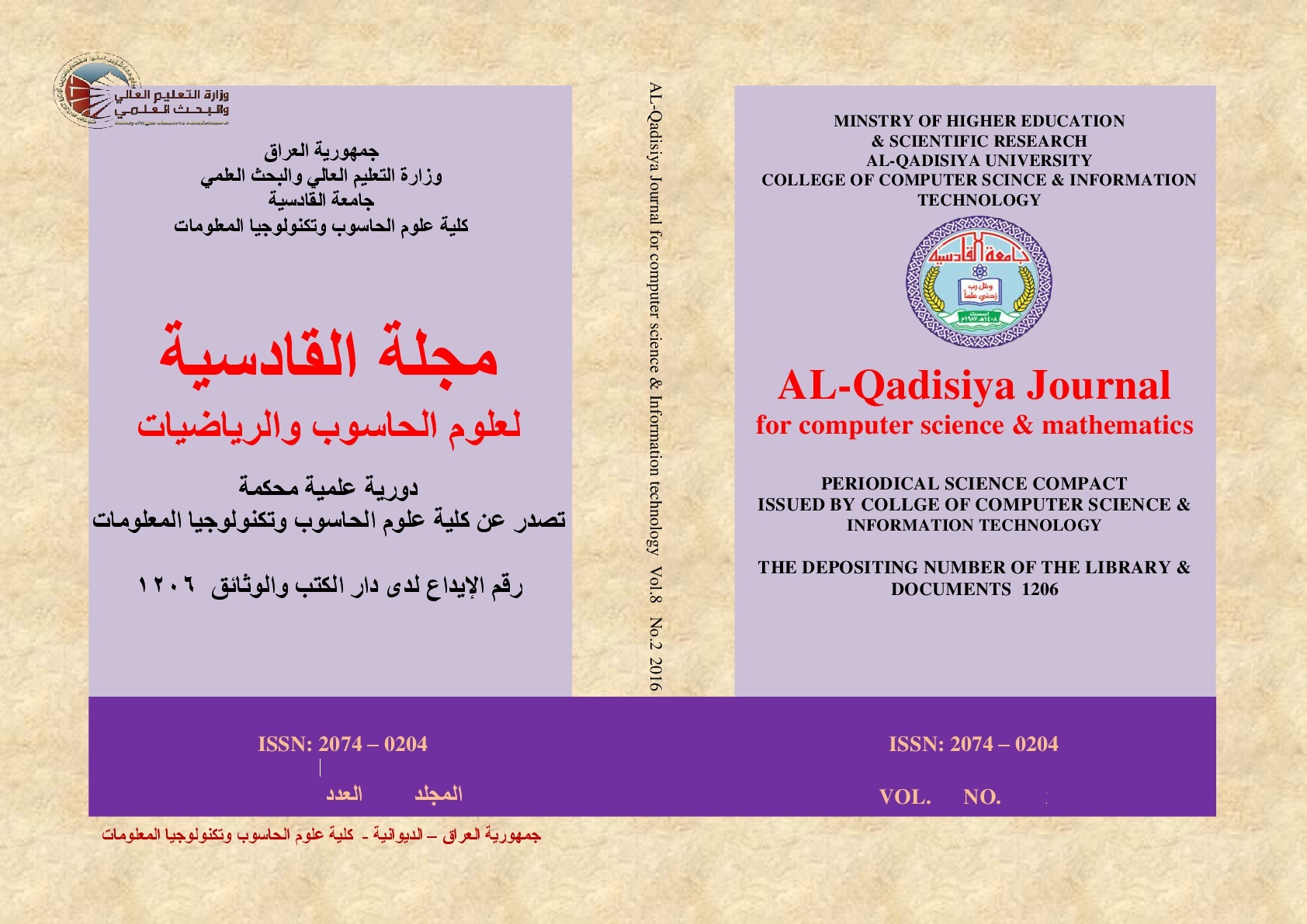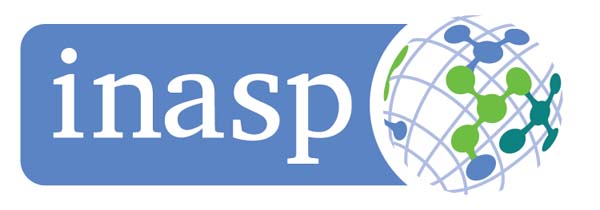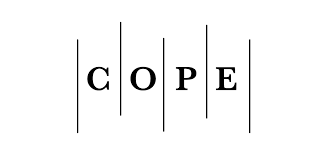Exploring Watermarking Strategies in Deep Learning: A Comprehensive Review
DOI:
https://doi.org/10.29304/jqcsm.2025.17.22187Keywords:
image watermarking, deep learning, Generative adversarial network (GAN)Abstract
Recently, there has been a notable increase in the need for the generation, dissemination, and storage of extensive volumes of multimedia data, especially digital images, generated by different intelligent devices and sensors. Along with other security vulnerabilities, such activity results in unauthorized access and false use of data. Embedding a watermark design into a digital cover and then removing it helps to address ownership conflicts and copyright infringement concerns related to the media data. Deep-learning methods are currently rather helpful for watermarking because of their high accuracy, great precision, and strong learning ability. This article presents a comprehensive examination of watermarking techniques used in deep learning contexts. We start by explaining the basic ideas of both traditional and learning-based digital watermarking, and then we look at common watermarking methods that use deep learning models. We then provide a succinct summary and comparison of the most recent contributions in the literature. Finally, we highlight the challenges related to obfuscation and suggest avenues for further study.
Downloads
References
Singh, A. K. (2019). Robust and distortion control dual watermarking in LWT domain using DCT and error correction code for color medical image. Multimedia Tools and Applications, 78(21), 30523-30533.
Singh, O. P., Singh, A. K., Srivastava, G., & Kumar, N. (2021). Image watermarking using soft computing techniques: A comprehensive survey. Multimedia Tools and Applications, 80(20), 30367-30398.
Singh, O. P., Singh, A. K., Agrawal, A. K., & Zhou, H. (2022). SecDH: Security of COVID-19 images based on data hiding with PCA. Computer Communications, 191, 368-377.
Singh, H. K., & Singh, A. K. (2023). Comprehensive review of watermarking techniques in deep-learning environments. Journal of Electronic Imaging, 32(3), 031804-031804.
Gull, S., Loan, N. A., Parah, S. A., Sheikh, J. A., & Bhat, G. M. (2020). An efficient watermarking technique for tamper detection and localization of medical images. Journal of ambient intelligence and humanized computing, 11, 1799-1808.
Singh, D., & Singh, S. K. (2017). DCT based efficient fragile watermarking scheme for image authentication and restoration. Multimedia Tools and Applications, 76, 953-977.
Huang, Z., Lin, Y., & Chen, X. (2024). A block-based adaptive high fidelity reversible data hiding scheme in interpolation domain. Multimedia Tools and Applications, 83(22), 61715-61736.
Kamaruddin, N. S., Kamsin, A., Por, L. Y., & Rahman, H. (2018). A review of text watermarking: theory, methods, and applications. IEEE Access, 6, 8011-8028.
Amrit, P., & Singh, A. K. (2022). Survey on watermarking methods in the artificial intelligence domain and beyond. Computer Communications, 188, 52-65.
Li, Y., Wang, H., & Barni, M. (2021). A survey of deep neural network watermarking techniques. Neurocomputing, 461, 171-193.
Wan, W., Wang, J., Zhang, Y., Li, J., Yu, H., & Sun, J. (2022). A comprehensive survey on robust image watermarking. Neurocomputing, 488, 226-247.
Zhang, C., Lin, C., Benz, P., Chen, K., Zhang, W., & Kweon, I. S. (2021). A brief survey on deep learning based data hiding. arXiv preprint arXiv:2103.01607.
Y Li, Y., Wang, H., & Barni, M. (2021). A survey of deep neural network watermarking techniques. Neurocomputing, 461, 171-193.
Wang, Z., Byrnes, O., Wang, H., Sun, R., Ma, C., Chen, H., .. & Xue, M. (2023). Data hiding with deep learning: A survey unifying digital watermarking and steganography. IEEE Transactions on Computational Social Systems, 10(6), 2985-2999.
Heaton, J. (2018). Ian goodfellow, yoshua bengio, and aaron courville: Deep learning: The mit press, 2016, 800 pp, isbn: 0262035618. Genetic programming and evolvable machines, 19(1), 305-307.
Hatoum, M. W., Couchot, J. F., Couturier, R., & Darazi, R. (2021). Using deep learning for image watermarking attack. Signal Processing: Image Communication, 90, 116019.
Ingaleshwar, S., & Dharwadkar, N. V. (2023). Water chaotic fruit fly optimization-based deep convolutional neural network for image watermarking using wavelet transform. Multimedia Tools and Applications, 82(14), 21957-21981.
Bagheri, M., Mohrekesh, M., Karimi, N., & Samavi, S. (2020). Adaptive control of embedding strength in image watermarking using neural networks. arXiv preprint arXiv:2001.03251.
Taye, M. M. (2023). Theoretical understanding of convolutional neural network: Concepts, architectures, applications, future directions. Computation, 11(3), 52.
Rouhani, B. D., Chen, H., & Koushanfar, F. (2018). Deepsigns: A generic watermarking framework for ip protection of deep learning models. arXiv preprint arXiv:1804.00750.
Sharma, V. K., & Mir, R. N. (2022). An enhanced time efficient technique for image watermarking using ant colony optimization and light gradient boosting algorithm. Journal of King Saud University-Computer and Information Sciences, 34(3), 615-626.
Zhang, L., & Wei, D. (2020). Image watermarking based on matrix decomposition and gyrator transform in invariant integer wavelet domain. Signal Processing, 169, 107421.
Zheng, W., Mo, S., Jin, X., Qu, Y., Deng, F., Shuai, J., .. & Long, S. (2018, May). Robust and high capacity watermarking for image based on DWT-SVD and CNN. In 2018 13th IEEE Conference on Industrial Electronics and Applications (ICIEA) (pp. 1233-1237). IEEE.
Li, D., Deng, L., Gupta, B. B., Wang, H., & Choi, C. (2019). A novel CNN based security guaranteed image watermarking generation scenario for smart city applications. Information Sciences, 479, 432-447.
Nie, H., Lu, S., Wu, J., & Zhu, J. (2024). Deep Model Intellectual Property Protection with Compression-Resistant Model Watermarking. IEEE Transactions on Artificial Intelligence.
Etemad, E., Samavi, S., Reza Soroushmehr, S. M., Karimi, N., Etemad, M., Shirani, S., & Najarian, K. (2018). Robust image watermarking scheme using bit-plane of hadamard coefficients. Multimedia Tools and Applications, 77, 2033-2055.
Su, Q., & Chen, B. (2018). Robust color image watermarking technique in the spatial domain. Soft Computing, 22, 91-106.
Zizhuo, W. A. N. G., Kun, H. U., HUANG, C., Zixuan, H. U., Shuo, Y. A. N. G., & Xingjun, W. A. N. G. (2024). Robust blind image watermarking based on interest points. Virtual Reality & Intelligent Hardware, 6(4), 308-322.
Plata, M., & Syga, P. (2020, December). Robust spatial-spread deep neural image watermarking. In 2020 IEEE 19th International Conference on Trust, Security and Privacy in Computing and Communications (TrustCom) (pp. 62-70). IEEE.
Zhu, J. (2018). HiDDeN: hiding data with deep networks. arXiv preprint arXiv:1807.09937.
Luo, X., Zhan, R., Chang, H., Yang, F., & Milanfar, P. (2020). Distortion agnostic deep watermarking. In Proceedings of the IEEE/CVF conference on computer vision and pattern recognition (pp. 13548-13557).
Ahmadi, M., Norouzi, A., Karimi, N., Samavi, S., & Emami, A. (2020). ReDMark: Framework for residual diffusion watermarking based on deep networks. Expert Systems with Applications, 146, 113157.
Mun, S. M., Nam, S. H., Jang, H. U., Kim, D., & Lee, H. K. (2017). A robust blind watermarking using convolutional neural network. arXiv preprint arXiv:1704.03248.
Singh, O. P., & Singh, A. K. (2023). Data hiding in encryption–compression domain. Complex & Intelligent Systems, 9(3), 2759-2772.
Singh, A. K., Dave, M., & Mohan, A. (2016). Hybrid technique for robust and imperceptible multiple watermarking using medical images. Multimedia Tools and Applications, 75, 8381-8401.
Thakur, S., Singh, A. K., Kumar, B., & Ghrera, S. P. (2020). Improved DWT-SVD-based medical image watermarking through hamming code and chaotic encryption. In Advances in VLSI, Communication, and Signal Processing: Select Proceedings of VCAS 2018 (pp. 897-905). Springer Singapore.
Anand, A., & Singh, A. K. (2020). An improved DWT-SVD domain watermarking for medical information security. Computer Communications, 152, 72-80.
Anand, A., Singh, A. K., Lv, Z., & Bhatnagar, G. (2020). Compression-then-encryption-based secure watermarking technique for smart healthcare system. IEEE MultiMedia, 27(4), 133-143.
Hsu, L. Y., & Hu, H. T. (2021). QDCT-based blind color image watermarking with aid of GWO and DnCNN for performance improvement. IEEE Access, 9, 155138-155152.
Byun, S. W., Son, H. S., & Lee, S. P. (2019). Fast and robust watermarking method based on DCT specific location. IEEE Access, 7, 100706-100718.
Li, J., Lin, Q., Yu, C., Ren, X., & Li, P. (2018). A QDCT-and SVD-based color image watermarking scheme using an optimized encrypted binary computer-generated hologram. Soft Computing, 22, 47-65.
Chen, B., Zhou, C., Jeon, B., Zheng, Y., & Wang, J. (2018). Quaternion discrete fractional random transform for color image adaptive watermarking. Multimedia Tools and Applications, 77, 20809-20837.
Moosazadeh, M., & Ekbatanifard, G. (2019). A new DCT-based robust image watermarking method using teaching-learning-based optimization. Journal of Information Security and Applications, 47, 28-38.
Kandi, H., Mishra, D., & Gorthi, S. R. S. (2017). Exploring the learning capabilities of convolutional neural networks for robust image watermarking. Computers & Security, 65, 247-268.
Nagai, Y., Uchida, Y., Sakazawa, S., & Satoh, S. I. (2018). Digital watermarking for deep neural networks. International Journal of Multimedia Information Retrieval, 7, 3-16.
Uchida, Y., Nagai, Y., Sakazawa, S., & Satoh, S. I. (2017, June). Embedding watermarks into deep neural networks. In Proceedings of the 2017 ACM on international conference on multimedia retrieval (pp. 269-277).
Guan, X., Feng, H., Zhang, W., Zhou, H., Zhang, J., & Yu, N. (2020, October). Reversible watermarking in deep convolutional neural networks for integrity authentication. In Proceedings of the 28th ACM International Conference on Multimedia (pp. 2273-2280).
Wu, J., Shi, H., Zhang, S., Lei, Z., Yang, Y., & Li, S. Z. (2018, February). De-Mark GAN: Removing dense watermark with generative adversarial network. In 2018 International Conference on Biometrics (ICB) (pp. 69-74). IEEE.
Cu, V. L., Burie, J. C., Ogier, J. M., & Liu, C. L. (2019, September). A robust data hiding scheme using generated content for securing genuine documents. In 2019 International Conference on Document Analysis and Recognition (ICDAR) (pp. 787-792). IEEE.
Loc, C. V., Burie, J. C., & Ogier, J. M. (2018, April). Stable regions and object fill-based approach for document images watermarking. In 2018 13th IAPR International Workshop on Document Analysis Systems (DAS) (pp. 181-186). IEEE.
Loc, C. V., Burie, J. C., & Ogier, J. M. (2018, August). Document images watermarking for security issue using fully convolutional networks. In 2018 24th International conference on pattern recognition (ICPR) (pp. 1091-1096). IEEE.
Cu, V. L., Burie, J. C., & Ogier, J. M. (2018, August). Watermarking for security issue of handwritten documents with fully convolutional networks. In 2018 16th International Conference on Frontiers in Handwriting Recognition (ICFHR) (pp. 303-308). IEEE.
Wei, Q., Wang, H., & Zhang, G. (2020). A robust image watermarking approach using cycle variational autoencoder. Security and Communication Networks, 2020(1), 8869096.
Zhang, L., Li, W., & Ye, H. (2021, October). A blind watermarking system based on deep learning model. In 2021 IEEE 20th International Conference on Trust, Security and Privacy in Computing and Communications (TrustCom) (pp. 1208-1213). IEEE.
Fan, B., Li, Z., & Gao, J. (2022). DwiMark: a multiscale robust deep watermarking framework for diffusion-weighted imaging images. Multimedia Systems, 28(1), 295-310.
Fang, H., Jia, Z., Zhou, H., Ma, Z., & Zhang, W. (2022). Encoded feature enhancement in watermarking network for distortion in real scenes. IEEE Transactions on Multimedia, 25, 2648-2660.
Kang, X., Huang, J., & Zeng, W. (2010). Efficient general print-scanning resilient data hiding based on uniform log-polar mapping. IEEE Transactions on Information Forensics and Security, 5(1), 1-12.
Zhu, J. (2018). HiDDeN: hiding data with deep networks. arXiv preprint arXiv:1807.09937.
Liu, Y., Guo, M., Zhang, J., Zhu, Y., & Xie, X. (2019, October). A novel two-stage separable deep learning framework for practical blind watermarking. In Proceedings of the 27th ACM International conference on multimedia (pp. 1509-1517).
Ma, Z., Zhang, W., Fang, H., Dong, X., Geng, L., & Yu, N. (2021). Local geometric distortions resilient watermarking scheme based on symmetry. IEEE Transactions on Circuits and Systems for Video Technology, 31(12), 4826-4839.
Neekhara, P., Hussain, S., Zhang, X., Huang, K., McAuley, J., & Koushanfar, F. (2022). FaceSigns: semi-fragile neural watermarks for media authentication and countering deepfakes. arXiv preprint arXiv:2204.01960.
Hou, J., Ou, B., Tian, H., & Qin, Z. (2021). Reversible data hiding based on multiple histograms modification and deep neural networks. Signal Processing: Image Communication, 92, 116118.
He, W., Cai, J., Zhou, K., & Xiong, G. (2017). Efficient PVO-based reversible data hiding using multistage blocking and prediction accuracy matrix. Journal of Visual Communication and Image Representation, 46, 58-69.
Jia, Y., Yin, Z., Zhang, X., & Luo, Y. (2019). Reversible data hiding based on reducing invalid shifting of pixels in histogram shifting. Signal Processing, 163, 238-246.
Li, X., Zhang, W., Gui, X., & Yang, B. (2015). Efficient reversible data hiding based on multiple histograms modification. IEEE Transactions on Information Forensics and Security, 10(9), 2016-2027.
Zhang, J., Gu, Z., Jang, J., Wu, H., Stoecklin, M. P., Huang, H., & Molloy, I. (2018, May). Protecting intellectual property of deep neural networks with watermarking. In Proceedings of the 2018 on Asia conference on computer and communications security (pp. 159-172).
Wu, H., Liu, G., Yao, Y., & Zhang, X. (2020). Watermarking neural networks with watermarked images. IEEE Transactions on Circuits and Systems for Video Technology, 31(7), 2591-2601.
Deeba, F., Kun, S., Dharejo, F. A., Langah, H., & Memon, H. (2020). Digital watermarking using deep neural network. International Journal of Machine Learning and Computing, 10(2), 277-282.
Hamamoto, I., & Kawamura, M. (2019). Image watermarking technique using embedder and extractor neural networks. IEICE transactions on Information and Systems, 102(1), 19-30.
Sinhal, R., Jain, D. K., & Ansari, I. A. (2021). Machine learning based blind color image watermarking scheme for copyright protection. Pattern Recognition Letters, 145, 171-177.
Islam, M., Roy, A., & Laskar, R. H. (2018). Neural network based robust image watermarking technique in LWT domain. Journal of Intelligent & Fuzzy Systems, 34(3), 1691-1700.
Kazemi, M. F., Pourmina, M. A., & Mazinan, A. H. (2020). Analysis of watermarking framework for color image through a neural network-based approach. Complex & Intelligent Systems, 6, 213-220.
Singh, A. K., Kumar, B., Singh, S. K., Ghrera, S. P., & Mohan, A. (2018). Multiple watermarking technique for securing online social network contents using back propagation neural network. Future Generation Computer Systems.
Downloads
Published
How to Cite
Issue
Section
License
Copyright (c) 2025 Hadeel Mohsen Ibrahim, Methaq Talib Gaata, Huda Abdulaali Abdulbaqi

This work is licensed under a Creative Commons Attribution-NonCommercial-NoDerivatives 4.0 International License.













